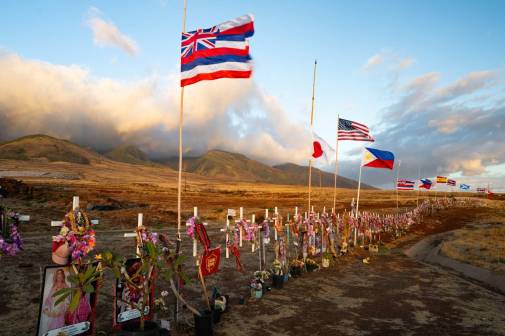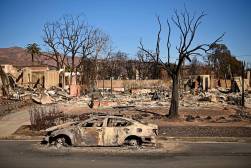New counties task force to demand disaster program reforms

To help counties combat the growing frequency, intensity and destruction of natural disasters, the National Association of Counties last week launched the Intergovernmental Disaster Reform Task Force.
Comprised of 28 county leaders, the task force aims to modernize federal disaster policies to make accessing emergency funds and recovery aid from the Federal Emergency Management Agency easier for local governments, and to strengthen county disaster resilience with emerging technologies.
The association estimates reports that nearly one-third of counties experienced at least one federally declared disaster last year.
“The truth is all disasters start local and end at the local level, so every county throughout this country is in charge of managing emergency services and disaster preparedness and mitigation,” NACo president James Gore told StateScoop in an interview. “Part of that work, whether you’re a tiny county of 600 or 1000 people, or you are a megalopolis, a county like Los Angeles, is that you are front and center with having local hazard mitigation plans.”
According to the association, counties own and operate 44% of public road miles, 38% of the nation’s bridges, 960 public hospitals and a third of U.S. airports — critical infrastructure essential to emergency operations and recovery efforts. As a result, local governments are increasingly buying new technologies, such as AI-powered emergency communication systems, to help mitigate disasters and support their operations.
The Maui county government in Hawaii this month updated its emergency preparedness and evacuation management systems to better protect residents and tourists from disasters, like the destructive Lahaina wildfire that struck the island last year. In October, Florida launched the Broadcast Emergency Alerting and Communication Operational Network, an emergency communications tool, in wake of Hurricane Milton and Hurricane Helene.
Gore criticized FEMA’s current compliance-heavy process, which he said delays the release of funds and causes practical issues for counties that rely on the money to assist in recovery efforts following natural disasters, including debris removal, reconstruction and supporting residents affected by disasters.
“The alert and warning technology that we use, how we how we micro-target areas, what’s needed, not only on our side, but what’s needed on the on the carrier side, the utility side, managed by the FCC and others, you also have to deal with accounting and financial systems,” said Gore, explaining how funding and emergency management are connected. “It sounds esoteric, but it’s absolutely needed if you’re going to be in this.”
Gore said NACo’s intergovernmental task force will push to reform of the National Flood Insurance Program, demand increased transparency with FEMA’s Public Assistance Program and request codification of the Community Development Block Grant Disaster Recovery Program. He said it will also ask for the creation of a universal disaster application for affected residents.
“FEMA acts as a pre-disaster mitigation lead, just like each state agency does, but on the other side, then they also act as a backdrop when you have a disaster locally and you don’t have the capacity with your staff or the funding to be able to get moving really quickly,” Gore said, speaking of the partnership between local governments and the federal agency. “They are your support network.”
Over the last 10 years, 173 billion-dollar disasters have collectively cost the U.S. more than $1.2 trillion, according to a January report from the National Oceanic Atmospheric Administration. So far in 2024, the U.S. has experienced 24 billion-dollar disasters.






